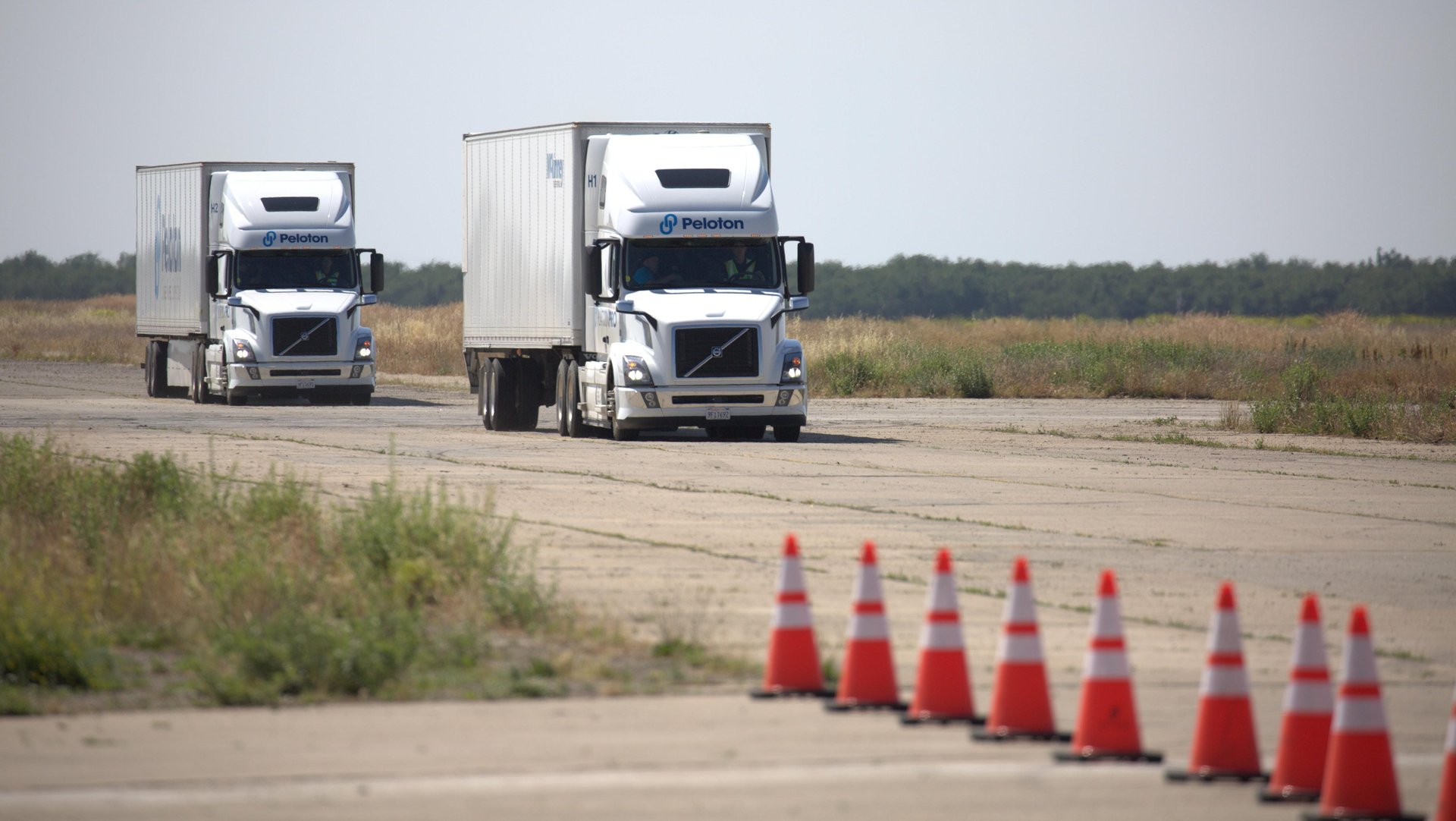Self-driving platoons of trucks are coming to a highway near you
There’s a joke in the autonomous vehicle community right now: How do you know you’re in a self-driving car? There are two human drivers in the front. Many of the companies testing out self-driving cars in the US, like Uber, Waymo, and GM’s Cruise, have ridden with a safety driver behind the wheel, and an engineer in the passenger seat monitoring the car’s systems.


There’s a joke in the autonomous vehicle community right now: How do you know you’re in a self-driving car? There are two human drivers in the front. Many of the companies testing out self-driving cars in the US, like Uber, Waymo, and GM’s Cruise, have ridden with a safety driver behind the wheel, and an engineer in the passenger seat monitoring the car’s systems.
Such precautions are necessary because fully self-driving vehicles have proven far more elusive than expected. Their arrival date keeps getting pushed back because autonomous vehicle (AV) designers must account for a vast number of highly improbable—yet potentially lethal— possibilities before safely handing over the wheel to algorithms. Merely logging more miles, which many AV companies tout as a statistic to reflect their experience, isn’t enough.
Yet automated trucking company Peloton (not to be confused with the exercise bike company, Peloton) is ready to roll out its automated semi-truck. The Silicon Valley-based firm says it demonstrated its first self-driving semi earlier this year. Peloton has been testing out a less-advanced driver-assistance system that’s been under development since 2013. It’s already in trials with six commercial trucking fleets, using technologies such as automated braking and acceleration. This level of automation is referred to as “Level 1” autonomy on the Society of Automotive Engineers’ five-level classification system. (No company has managed to show off a fully autonomous Level 5 machine to date.)
Peloton’s next vehicle will catapult trucks to Level 4 capabilities, driving entirely on their own. The trick has been keeping a human driver in the loop. Peloton avoids the current limitations of autonomous software by making the human driver responsible for the second truck (and perhaps more in the future). The human driver is still in control of the lead vehicle, keeping an eye out for any unexpected situations, while the autonomous vehicles follow closely behind. The company’s “automated following” system was demonstrated for customers for the first time earlier this year.
Peloton’s following technology wirelessly links two trucks together. The driver manages the lead truck’s steering, acceleration, and braking, and the trailing truck responds based on what the human-driven vehicle ahead does. This practice, known as platooning, has long been common in the trucking industry, as it can reduce fuel costs for the following trucks by cutting aerodynamic drag. With an automated platoon, drivers could see their productivity double overnight, and relieve fleet owners desperate to recruit more skilled drivers.
“We see the human driver as the world’s best sensor,” Peloton CEO Josh Switkes said at the Automated Vehicle Symposium in Orlando this week, “but the only thing better than the human driver is the driver augmented with sensors.”
Peloton isn’t alone in its ambitions. Another group, comprised of researchers and trucking companies, recently carried out a seven-month experiment in Germany, testing similar technology by hauling cargo over 35,000 km (21,748 miles) between Munich and Nuremberg in platooned automated trucks. Christian Haas of the Fresenius University of Applied Sciences, who helped oversee the trial, said the autonomous system operated 98% of the time, and drivers overrode the system only one time every 2,000 km (1,242 miles). The hardware that makes that possible—automated braking, acceleration, lane-keeping, and sensor awareness—have begun to become standard equipment among major truck manufacturers, Haas said.
Not everyone is convinced. Daimler Trucks’s view of platooning has darkened over the last year: In January, the company announced at the Consumer Electronics Show in Las Vegas it was effectively backing away from the technology for the foreseeable future. Over long distances, fuel savings are low, Daimler argues. It says the technology “currently shows no business case for customers driving platoons with new, highly aerodynamic trucks,” a spokesperson told Quartz over email.
But Peloton challenges that notion: It claims it has recorded fuel savings as high as 7% in trials, and customers are happy with the performance so far. Once it has its technology installed in more trucks, Switkes says it will roll out automation across the US, since highways are relatively consistent environments despite different routes, weather conditions, and traffic.
Of course, all of this relies on the human in charge to manage the uncertainty. Fully autonomous trucks, devoid of any human oversight, probably won’t be here too soon. “We think those are a long way off,” Switkes said.